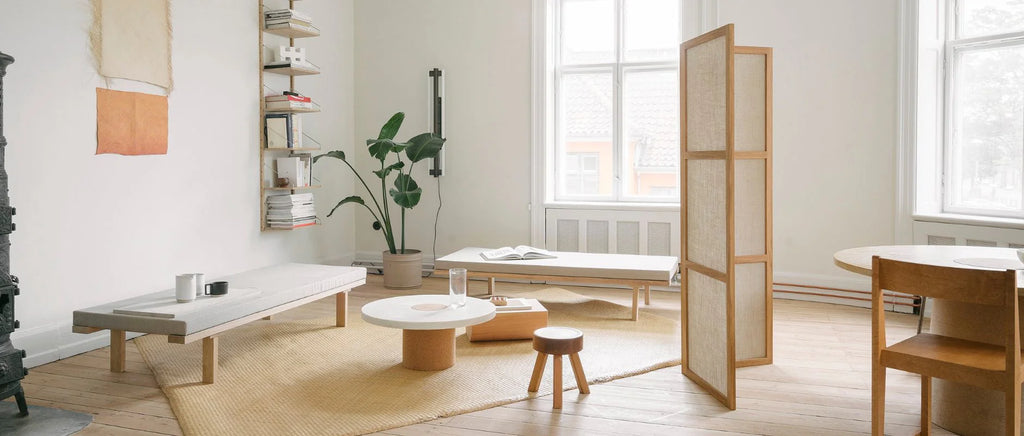The Good Design Journal
DEDICATED MENTAL HEALTH SPACES ARE A HOME ESSENTIAL. HERE’S HOW TO DESIGN YOUR OWN.

Creating a dedicated mental health space in your home is important because it can provide a sanctuary for you to relax, unwind, and recharge. With the current climate of uncertainty and stress, it’s more important than ever to prioritise your mental health and wellbeing. By creating a space in your home that is solely dedicated to your mental health needs, you can give yourself the time and space you need to process emotions, release tension, and connect with yourself.
What is a Mental Health Space?
A mental health space is a designated area in your home that is focused on promoting mental health and wellbeing. It can be any room in your house or even a small nook, as long as it’s a space that feels safe, calming, and supportive. The purpose of a mental health space is to provide a sense of escape, somewhere you can take a break from the stresses of daily life and connect back in with yourself.

A House For A Gardener by Amos Goldreich Architecture | Photography by Ollie Hammick

Mill Cabin | Photography by Lean Timms

Botaniczna Apartment by Agnieszka Owsiany Studio | Photography by PION Studio
Identify What You Need.
The first step in creating a mental health space is to identify your individual needs. Think about the type of environment you find most calming and comforting – it’s here you’ll have the most positive mental health outcomes. Do you prefer a quiet space or do you find comfort in nature sounds or music? Think about what activities make you feel relaxed and rejuvenated, such as reading, meditating, or doing yoga. This will help you determine what elements you need to include in your mental health space.

Choose a Location.
When choosing a location for your mental health space, consider where in your home you feel most comfortable and relaxed. It could be a spare bedroom, a cosy corner in your living room, or even a space in your backyard. The important thing is to choose a location where you feel at ease and can retreat to whenever you need a mental break.

Office of The Poster Club | Photography by The Poster Club

The Unfolding Home by ACOS | Photography by PION Studio

Walnut House by Adam Kane Architects | Photography by Timothy Kaye
Decorate.
Once you’ve chosen a location for your mental health space, it’s time to decorate it to make it feel unique and comforting. You can add touches like soft blankets, pillows , plants, and lamps to create a warm and inviting atmosphere. It’s also helpful to personalise your space with photos or artwork that brings you joy. Colour is also an amazing and effective way to improve your mental health when indoors. Denisse Garcia recommends a colour therapy approach in their article, Easy Ways to Improve Mental Wellbeing at Home Remember . The goal is to create a space that feels like a sanctuary and promotes relaxation and peace – your place to escape.
Stock It.
Another layer to consider in your mental health space involves the senses, more specifically, relaxing them. Unsurprisingly, there are plenty of products out there to help you take care of this and chances are you’ll have a few on hand already. Think calming teas, aromatherapy diffusers , meditation cushions, bluetooth speakers , and scented candles . You might also consider keeping a journal, coloring book , or stack of magazines on hand to help you unwind and clear your mind.
Find Balance.
While having a mental health space in your home is important, it’s also important to find a balance between using your space and getting out and living your life. Make sure to set aside dedicated time to spend in your mental health space, but also remember to engage in other activities that bring you joy and fulfillment.

Creating a mental health space in your home can have a profound impact on your mental health and wellbeing. By identifying your individual needs, choosing a location, decorating, and stocking it with helpful items, you can create a sanctuary that promotes relaxation, calmness, and emotional wellbeing. Remember to find a balance between using your space and engaging in other activities, and you’ll be well on your way to a happier, healthier life.



